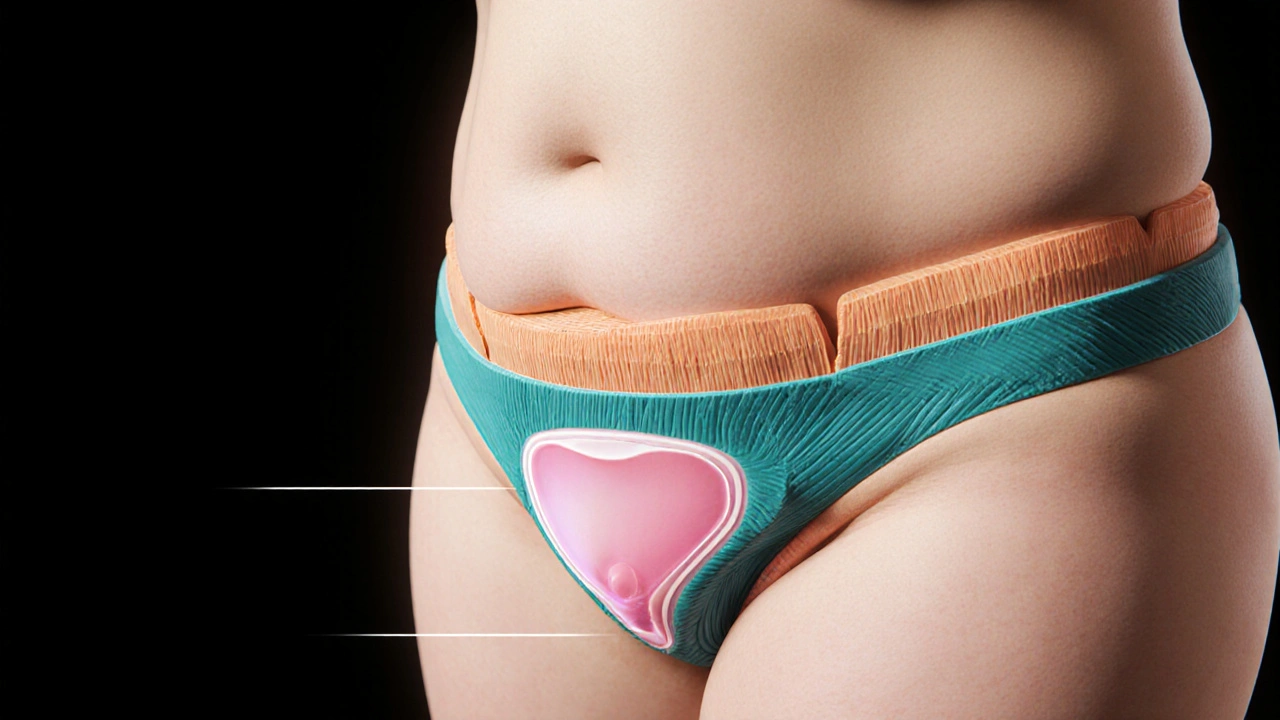Ever felt a pressure down below after putting on a few extra pounds? That’s a sign of pelvic floor obesity – the extra weight pressing on the muscles that support your bladder, bowels, and intimate parts. When those muscles are forced to work harder, you may notice leaks, pain, or trouble with sexual function. The good news? Simple changes can ease the strain and restore balance.
Pelvic floor obesity isn’t a medical term you’ll see on a prescription bottle. It’s a way to describe how excess body fat surrounds the pelvic region and overloads the supportive muscles. Fat can sit deep in the abdomen, pushing the pelvic floor upward, while also changing the angle of the hips. This double‑hit makes the floor weaker and less able to hold urine or keep the pelvic organs in place.
Think of your pelvic floor like a hammock. When you add a heavy backpack, the ropes stretch and eventually sag. The same thing happens when weight increases – the hammock (your floor) stretches, and leaks can appear.
1. Trim the excess. Losing even 5‑10% of body weight can lower the pressure on your pelvis dramatically. Focus on a balanced diet: plenty of veggies, lean protein, and fiber to keep you full and steady. Skip sugary drinks and processed snacks that add calories without nutrients.
2. Strengthen the core, not just the abs. Traditional crunches won’t directly train the pelvic floor. Try low‑impact moves like pelvic tilts, bridges, and dead‑bugs. These engage the deep abdominal muscles that work together with the pelvic floor.
3. Do specific pelvic floor exercises. Kegels are the classic choice, but they’re often done wrong. The key is to gently squeeze the muscles you’d use to stop urinating, hold for three seconds, then release. Aim for three sets of ten each day. If you’re unsure, a physio can show you the right technique.
4. Move daily. Walking, swimming, or cycling keeps circulation flowing and prevents fluid buildup that can worsen pressure. Aim for at least 30 minutes most days.
5. Get professional guidance. A pelvic health physiotherapist can assess your strength, teach proper exercises, and spot hidden issues like tight hip flexors that add strain.
Remember, fixing pelvic floor obesity isn’t a one‑off miracle. It’s a mix of weight management, targeted exercise, and sometimes medical support. Start small – swap soda for water, add a ten‑minute walk, and practice a few Kegels each night. Those tiny habits add up, and before long you’ll feel less pressure, fewer leaks, and a stronger core.
If you’re already dealing with urinary incontinence or pelvic pain, don’t wait. Talk to your doctor or a pelvic health specialist today. The sooner you address the weight‑related strain, the quicker you’ll get relief and get back to living comfortably.

Explore how obesity raises the risk of urine leakage, learn warning signs, and discover effective weight‑loss, diet, and pelvic‑floor strategies to prevent urinary incontinence.